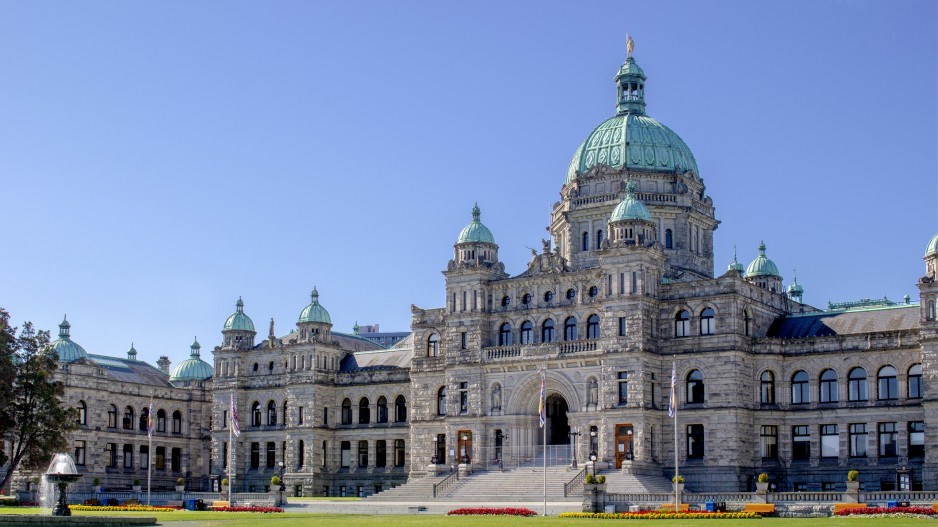In 2021 and 2022, 4,578 people lost their lives in British Columbia in incidents described as “suspected illicit drug toxicity.”
When Research Co. and Glacier Media recently asked the province’s residents about the current state of affairs, there is near unanimity on the seriousness of the situation, dismay at the performance of elected officials and majority support for wide-ranging solutions.
Just over three in five British Columbians (61 per cent) describe the situation related to the use of prescription and non-prescription opioid drugs in their community as “a major problem.” More than one in four (27 per cent) consider it a “minor problem.” For just six per cent (up one point), the issue represents no problem at all.
By a 10-to-one margin, British Columbians look at this as an issue that definitely merits the attention of elected officials. Dissatisfaction is highest with Prime Minister Justin Trudeau and the Canadian federal government, with 56 per cent of the province’s residents rating their work to come up with solutions to deal with the use of prescription and non-prescription opioid drugs in their community as “bad” or “very bad.”
More than two in five of the province’s residents also think their member of Parliament (48 per cent), mayors and councils (44 per cent), Premier David Eby and the provincial government (45 per cent) and their member of the legislative assembly (43 per cent) have done a “bad” or “very bad” job dealing with this matter.
What is intriguing about the reaction of the public is that British Columbians aged 55 and over are decidedly more dissatisfied with politicians than their younger counterparts. Trudeau and the federal government, for instance, score a paltry 20 per cent on managing this file well – compared to 29 per cent among those aged 35 to 54 and 39 per cent among those aged 18 to 34.
The province’s oldest adults are not experiencing this crisis in the same fashion as their two younger cohorts. More than a third of British Columbians (36 per cent) told us they personally know someone – a family member, a friend or a co-worker – who has used prescription or non-prescription opioid drugs in the last year. While this includes 58 per cent of those aged 18 to 34, the proportions drop to 36 per cent among those aged 35 to 54 and to 23 per cent among those aged 55 and over.
One in five British Columbians (20 per cent) know someone who died after using prescription and non-prescription opioid drugs in their community – a proportion that rises to 25 per cent in both Northern B.C. and Southern B.C. and to 27 per cent in the Fraser Valley. The notion of illicit drug toxicity being a purely Metro Vancouver problem is no longer valid.
When it comes to possible solutions, more than two thirds of British Columbians endorse three different ideas: Creating more spaces for drug rehabilitation (81 per cent), launching more education and awareness campaigns about drug use (76 per cent) and reducing the prescription of opioids by medical professionals (69 per cent).
Majorities also believe it is time to do two other things: Establishing safe supply programs where alternatives to opioids, can be prescribed by health professionals (63 per cent) and setting up more harm reduction strategies, such as legal supervised injection sites (58 per cent).
The safe supply argument resonates across all age groups and garners the backing of majorities of British Columbians who voted for the BC Green Party (73 per cent), the BC New Democratic Party (NDP) (68 per cent) and the BC Liberals (55 per cent) in the 2020 election.
Another possible action – the decriminalization of all drugs for personal use – remains more contentious, with the support of 40 per cent of British Columbians. On this issue, the age gap is staggering. More than half of those aged 18 to 34 (55 per cent) favour complete decriminalization, compared to 45 per cent among those aged 35 to 54 and just 29 per cent of those aged 55 and over.
It is clear that British Columbians do not think a one-size-fits-all plan to deal with the use of prescription and non-prescription opioid drugs in their community will work. While decriminalization is not particularly welcomed, majorities think there is room for both safe supply, harm reduction, rehabilitation and information in any major policy that tackles this crisis.
If any other product, legally acquired or not, was responsible for six deaths every day in British Columbia, decisive action would be taken swiftly. Politicians would be wise to consider a holistic approach if they really want to tackle this issue.
Mario Canseco is president of Research Co.
Results are based on an online study conducted from May 17 to May 19, 2023, among 800 adults in British Columbia. The data has been statistically weighted according to Canadian census figures for age, gender and region in Canada. The margin of error – which measures sample variability – is plus or minus 3.5 percentage points, 19 times out of 20.



